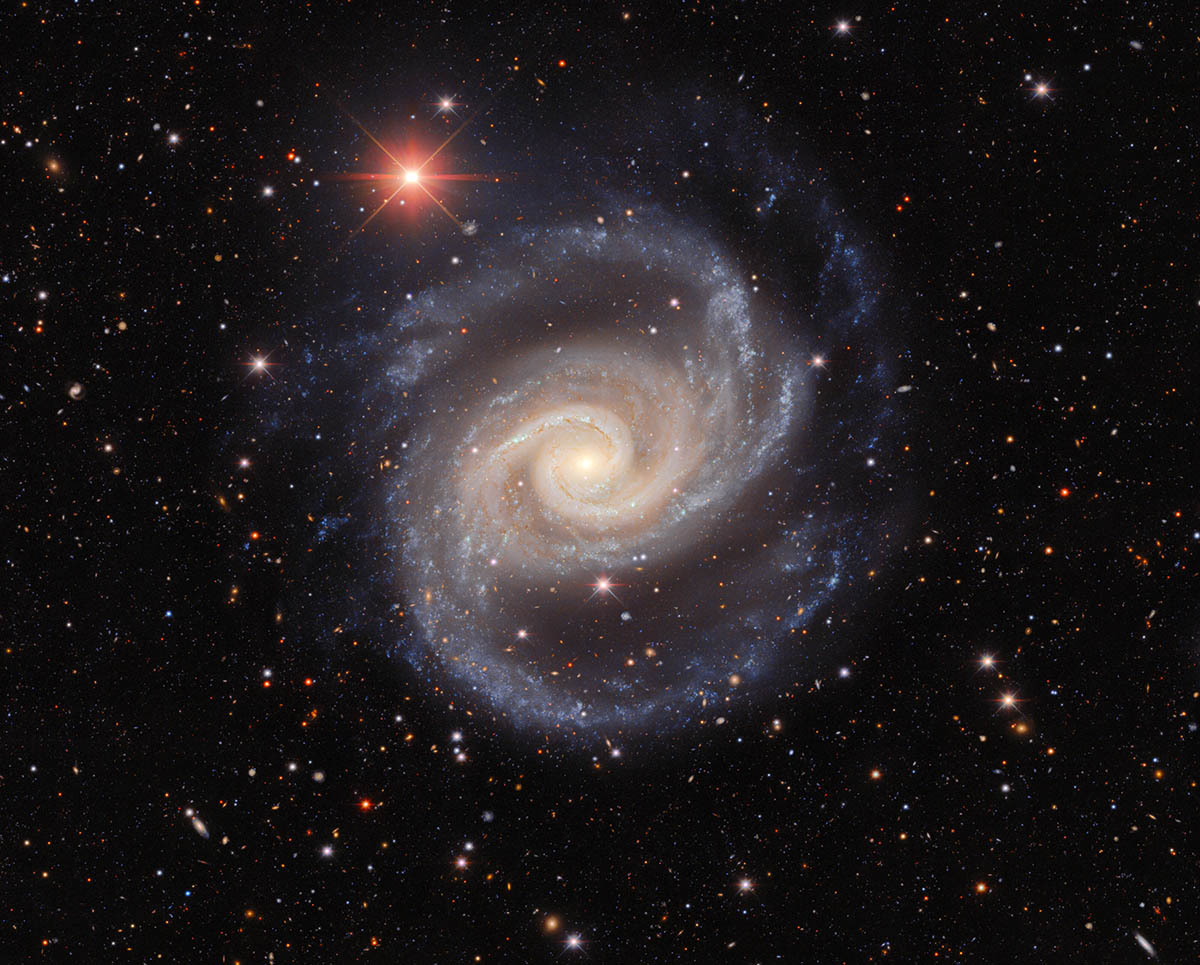NOIRLab: Spanish Dancer Galaxy Twirls into View

Located in the constellation Dorado and lying around 70 million light-years away, NGC 1566 is a grand-design spiral galaxy with two arms that appear to wind around the galactic core, just like the arms of a dancer as they spin around and around in a furious twirl. This image was taken from Chile at the Cerro Tololo Inter-American Observatory (CTIO), a Program of NSF’s NOIRLab, using the Dark Energy Camera. The galaxy’s face-on view to us, its location, and its composition make it a trove of observational opportunities for astronomers across many fields of astronomy.
NGC 1566 is home to stars at all stages of stellar evolution. In this image, the bright blue color that outlines the arms of the galaxy arises from young, brightly burning stars. Darker spots within these arms are dust lanes. The arms are rich in gas, and form large-scale areas that provide the perfect environment for new stars to form. Closer to the center of the galaxy are cooler, older stars and dust, all evident by the redder color in the image. This galaxy has even been host to an observed stellar end-of-life event, when a supernova, named SN2010el, burst onto the scene in 2010.
The center of NGC 1566 is dominated by a supermassive black hole. The distinct and highly luminous nucleus of the galaxy is known as an active galactic nucleus. The light from the nucleus changes on timescales of only hundreds of days, making its exact classification difficult for astronomers.
NGC 1566 is the brightest member, and one of three dominant members, of a collection of galaxies known as the Dorado Group, another member of which is NGC 1515. Galaxy groups are collections of fewer than 50 galaxies, loosely held together by the gravitational pull that each exerts on the others. The Dorado Group consists of at least 46 galaxies. NGC 1566 itself is so dominant that it has its own group, the NGC 1566 Group. The commanding role of NGC 1566 in the Dorado Group has made it a key target for scientists aiming to determine the distance to the group itself, thereby improving our understanding of large-scale structures within the Universe.
